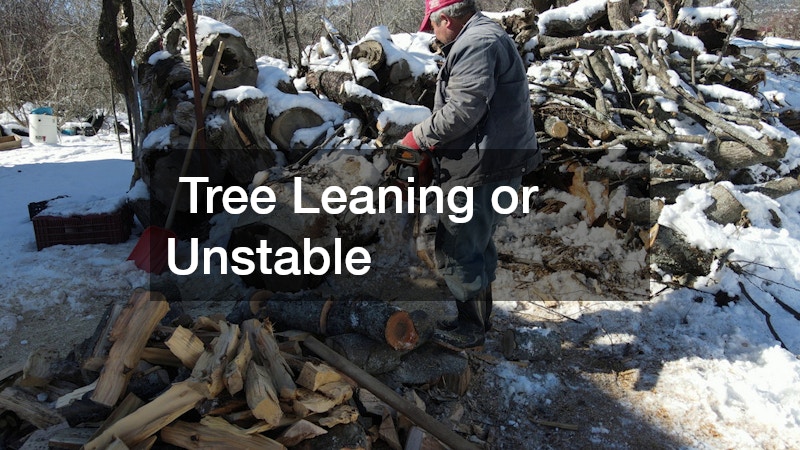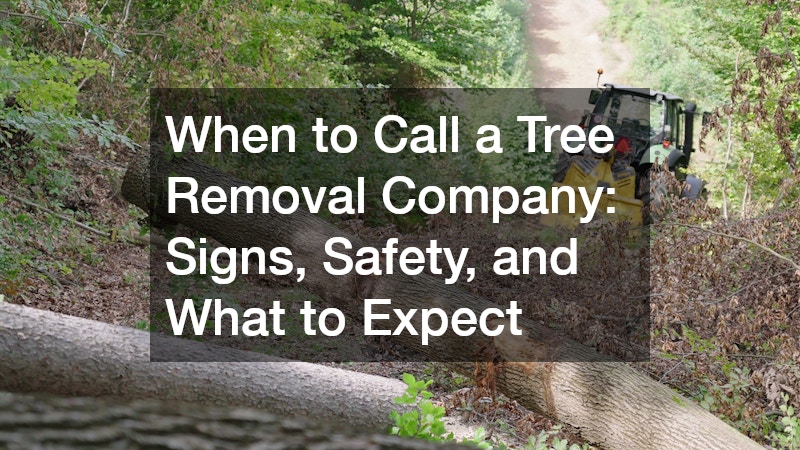In this article, we explore the circumstances when you should consider reaching out to a professional tree removal service. Whether for safety, landscape management, or emergency purposes, it’s crucial to know the right time to call experts. We will delve into key signs, safety considerations, and the expectations you should have when hiring a tree removal company.
Visible Damage and Disease
Visible signs of damage in a tree can often be the first indication that removal might be necessary. Fungal growth, such as mushrooms near the base of the tree, can signify internal rot, which weakens the tree structure.
Similarly, other signs like deep cracks in the bark or branches that lack foliage among the top can signify disease that may not be reversible.
A tree showing thinning or wilting leaves during seasons when full foliage is expected might be sick. Diseases like Dutch elm disease or ash dieback can spread swiftly, and catching them early is critical. Contacting a professional to assess the tree’s health can prevent greater ecological issues and hazard risks.
Tree Leaning or Unstable
A leaning tree is often a sign of instability, which could be exacerbated by soil erosion, root damage, or bad weather conditions. While some trees naturally lean slightly without posing a risk, a tree that leans significantly, especially if it develops suddenly, should be evaluated. The angle of lean and the amount of root exposure may determine whether a tree requires immediate removal.
Unstable trees can be hazardous to nearby property, power lines, and people. High winds or storms can easily uproot such trees, leading to significant damage. A professional’s expertise can elucidate whether cabling and bracing are solutions, or if tree removal is the best course of action to ensure safety.
Proximity to Structures
Trees growing dangerously close to buildings can pose both immediate and future risks. Their roots can extend and invade foundations or plumbing systems, leading to costly repairs. For trees in such proximity, periodic assessments are crucial to prevent any potential damage or compromise to structural integrity.
Branches from trees near buildings can cause roof and siding damage, especially during storms. The risk of falling limbs is never to be underestimated, and trimming is not always a comprehensive solution. Tree removal may be recommended if regular maintenance doesn’t mitigate these inherent risks.
Threats to Personal Safety
Overgrown trees can significantly impact personal safety by obscuring views and creating blind spots on properties or public paths. Limbs that hang low can create steering obstacles for vehicles, while dense foliage can block essential visibility for security and aesthetics. Regular trimming can mitigate some visibility issues, but removal might be the best way to reinstate safety effectively.
Trees that have grown extensively tall or have sprawling branches can break unexpectedly, posing dangers to individuals below. Heavy limbs falling without warning can cause serious injuries to people and pets. A consultation with a tree specialist can categorize these risks and provide you with practical solutions.
Property Damage Risks
Beyond personal safety, overgrown trees threaten structural aspects of properties, with branches potentially impacting roofs, windows, and outbuildings. Regular storms exacerbate these threats, making branches projectiles against property elements. Shrewd management through professional insights can help curb these risks.
Trees with extensive root systems can disrupt paved areas, driveways, and landscaping fixtures. As roots expand, they can create cracks and uneven surfaces, leading to the deterioration of these structures. Prompt attention and potentially removing problematic tree species can abrogate future costly repairs.
Environmental Impact
Trees influence local ecosystems, and overgrowth can disrupt natural balances. When a tree captures an excessive amount of sunlight or nutrients, it may stunt the growth of surrounding plants. In such scenarios, minimizing or removing the tree can promote healthier biodiversity.
In some ecosystems, particular trees may become invasive, dominating resources to the detriment of native species. Removal can sometimes be the only solution to restoring environmental health and sustainability. Collaborations with skilled arborists can plan interventions that respect and rejuvenate local habitats.s.
Removal Process and Equipment Used
Once the necessary decision is made, the removal process includes several strategic steps designed for efficiency and safety. Tree climbing, sectional cutting, or the use of cranes may be employed for secure dismantling. The completion time and process will considerably depend on the accessed space and tree complexity.
Professional teams generally use specialized equipment such as chainsaws, wood chippers, ropes, and harnesses, following strict safety protocols. These experts know how to mitigate risk during removal to prevent any accidents or collateral property damage. Efficient use of technology saves time and ensures the surrounding landscape remains undisturbed.
Post-Removal Cleanup and Maintenance
Tree removal does not end with cutting down the tree; comprehensive cleanup follows. The removal service will typically chip the smaller branches and remove the debris, leaving your space clean and safe. This final process helps to prevent hazards like tripping and maintains the aesthetic appeal of your property.
Knowing when to call a tree removal company can protect your property and ensure safety. Stay informed about the signs of tree issues, understand the safety implications, and set realistic expectations for the removal process to make informed decisions when it comes to managing your landscape. By identifying early warnings and collaborating with experts, you maintain a beautiful, safe, and ecologically sound property.


